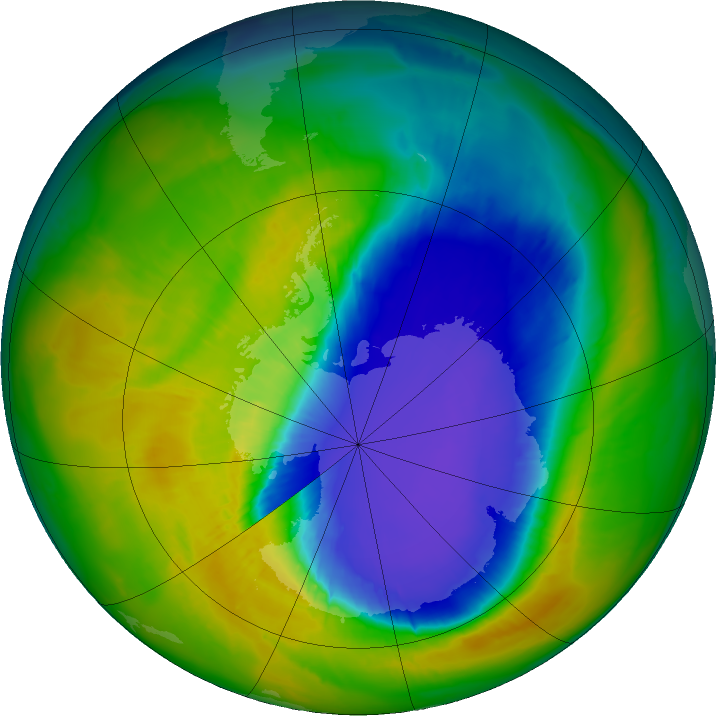
Just late last Saturday, a landmark international agreement was reached to phase down hydrofluorocarbons, or HFCs, a class of heat-trapping chemicals widely used in air conditioning, among other much-loved consumer products. This agreement will perhaps do more to combat global warming over the next half century than the Paris climate agreement to reduce carbon dioxide emissions.
Notably, this is the third time that a single international agreement—known as the Montreal Protocol, agreed to by 191 countries in 1987—has helped to save the world. And scientists quite literally with their “heads in the clouds” built the foundational science on which this pact rests.
First, the protocol prevented a global ozone hole. Three years before the protocol was signed, a group of British scientists reported a stunning observation that transformed atmospheric science and international environmental policy: the layer of ozone that forms a protective shield over the Earth by absorbing the sun’s harmful ultraviolet rays was markedly decreasing over Antarctica. The decreases were more pronounced each year.
The scientific and policy responses to their findings are a compelling story about the humbling and yet fascinating complexity of our world, the power of the scientific method, and the need for international agreements to help solve global environmental problems.
It quickly became obvious that the loss of ozone was widespread, forming a “hole” in the protective layer each spring which, at times extends from the South Pole to the tip of South America and Australia. Much less clear was why. Attention quickly centered on ChloroFluoroCarbons, or CFCs, widely used then as refrigerants and propellants. But the ozone hole seemed far worse than initially thought possible for CFCs to be the only cause.
The key puzzle piece linking CFCs and rapid ozone destruction is a fascinating bit of chemistry, involving CFCs and naturally occurring wispy clouds of ice particles and microscopic droplets of sulfuric acid known as polar stratospheric clouds. These clouds grow only under the unimaginably cold conditions of the winter stratosphere (-110 degrees Fahrenheit!), and like a sprinkling of fairy dust, they greatly speed up CFC-induced ozone destruction. It is now clear that this ozone destruction chemistry is a vicious cycle with a globally catastrophic tipping point.
How does this destructive cycle work? As atmospheric levels of CFC increase, they thin the ozone layer, and the air in that layer cools, because less of the sun’s rays are absorbed by ozone. As the layer cools, those cloud particles can destroy even more ozone, which causes further cooling, which causes more ozone destruction, and so on.
Paul Newman at NASA and colleagues recently showed just how dramatic the consequences of this vicious cycle would have been, had CFC use continued unabated. The global ozone layer would have thinned by more than half by 2050, with a regular ozone hole forming over the Arctic too, increasing our exposure to harmful ultraviolet radiation. And then, within a mere ten years between 2050 and 2060, they project a near collapse of the ozone layer would have occurred over the tropics, where nearly 40% of the population resides. Such a collapse is the definition of a “tipping point.”
Why this precipitous and rapid change? Previous decades of ozone destruction outside of the tropics would have cooled the ozone layer so much that the air in the tropical ozone layer would have decreased below -110 degrees F, the point where those esoteric polar cloud particles can help CFCs cause the most destruction. Once that temperature threshold was crossed, CFC-induced ozone destruction would have been greatly enhanced, causing a global ozone meltdown.
Billions of people and sensitive ecosystems in the tropics would suddenly receive as much as 5 times more harmful UV radiation than just a decade earlier; a situation that would have persisted for decades after because CFCs are long-lived. Rates of skin cancer and glaucoma would have increased several-fold. Air quality, also enhanced by ultraviolet radiation, would likely have also degraded. Crops and ecosystems would have suffered too, but much remains unknown in this regard. Thankfully, the U.N. amended the Montreal Protocol in 1992 to completely ban CFC production.
Nowadays, the talk is about tipping points in the climate system due to global warming: ice sheets can collapse, ocean circulation patterns can shift, hurricanes intensify, or ecosystems falter. And this brings us to the second time the international agreement to ban CFCs has saved the world. CFCs are also potent greenhouse gases, not just ozone destroyers. In fact, CFCs can trap thousands of times more heat in the atmosphere than the same amount of carbon dioxide.
A study by Velders and colleagues in 2007 showed that had CFCs continued to increase as they were before the Montreal Protocol, CFCs today would be contributing almost as much to the greenhouse effect as carbon dioxide. Meaning, we could have been experiencing the global warming expected to occur near the middle to end of the century, already in 2016. Banning CFCs was like getting rid of nearly half of the carbon dioxide – a big deal.
With the agreement last week to phase down HFCs, the replacements for CFCs, the Montreal Protocol has come to the rescue a third time. HFCs are not nearly as harmful towards the ozone layer, but they are nearly as potent greenhouse gases as the CFCs they replaced, and were poised to increase rapidly over the coming decades.
Humans will continue to exert enormous pressures on the Earth system as long as we exist. The ozone problem is a stark reminder that we will only be able to predict the next catastrophe if we understand the fundamental science of the Earth system, even down to the level of a seemingly esoteric and nearly invisible particles floating 15 miles above the Earth. If we continue to invest in clean energy and make progress in understanding the physical, biological, and chemical responses to global warming, we will be even more prepared to craft far-reaching and effective climate change solutions in the future.
